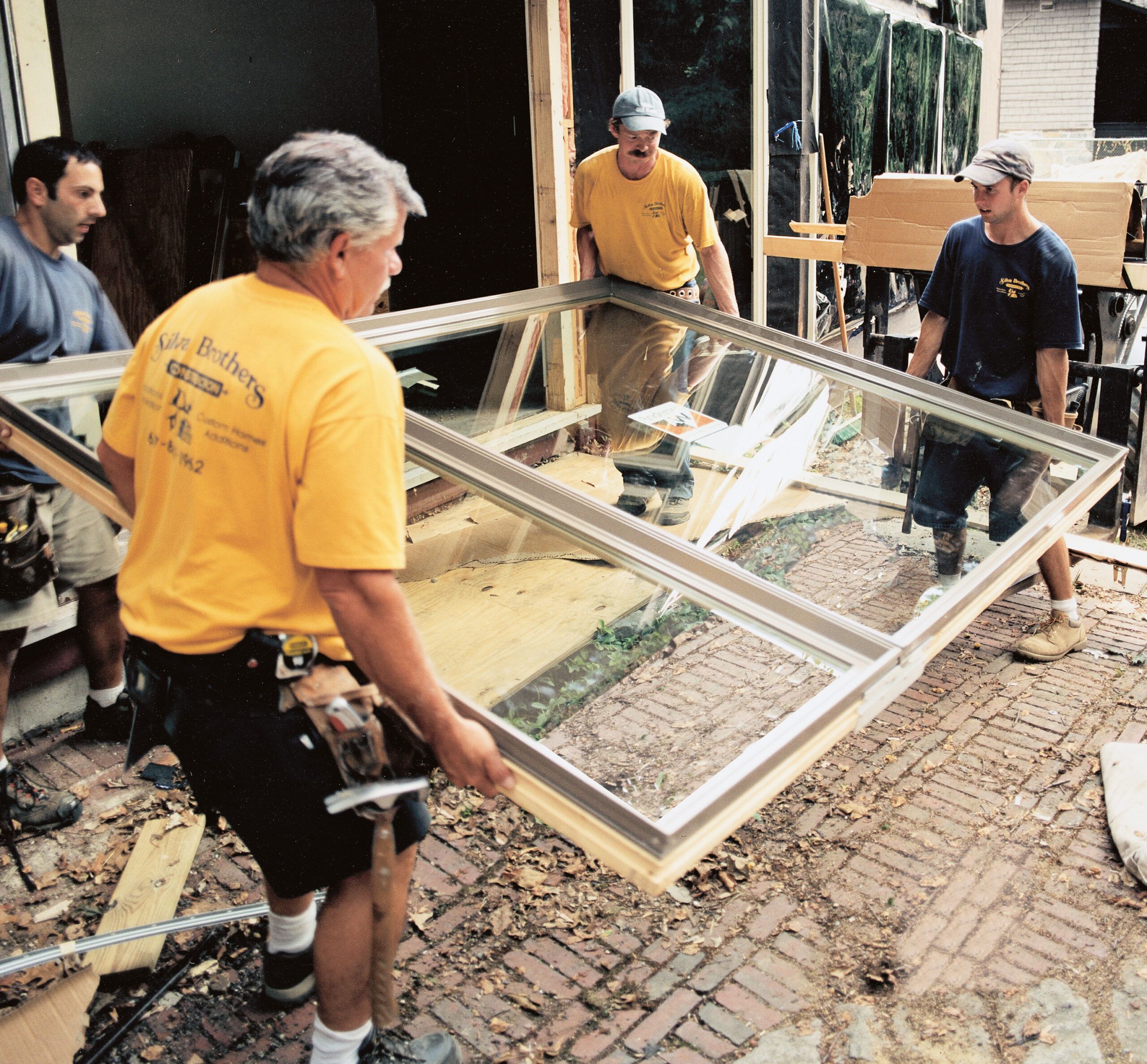
Its 1950 Modern style and backyard expanse of greenery are what make George Mabry’s house all about the windows. Lots of windows. Eighty-one of them, to be exact, including a whole line of floor-to-ceiling picture windows looking onto the leafy scene out back. “I basically bought the house for the huge backyard,” George says of the sloping one-third-acre lot. “I want to be able to see it from every room.”
In that respect, George’s home—this season’s This Old House television project—is a typical Modern house. In the middle of the 20th century, Modernist architecture embraced new steel-frame building techniques, freeing exterior walls from the burden of supporting the roof. That meant the walls could become curtains of glass, in effect dissolving the barrier between inside and out. The most famous example of this is Philip Johnson’s 1949 Glass House, in New Canaan, Connecticut, in which all four exterior walls are made of windows.
Though large windows fell out of favor in the energy-conscious 1970s and ’80s, today, both the glass and the frames holding it are much more efficient. Despite rising fuel costs, homeowners are adding more glass to homes big and small, whether as part of a remodel, an addition, or all-new construction. “As the technology gets better, people are feeling less guilty about going with bigger windows,” says Will Ruhl, the architect for the Cambridge, Massachusetts, TV project. “They like having the house connected to the outside.”
Unfortunately, most of this house’s large windows and sliding glass doors are the original, half-century-old, drafty single-pane units and have very little insulating value. They let too much heat blow out in the winter and roll in during the summer—for low efficiency in both seasons. Any replacements not only need to provide better insulation, they also need to protect against the bleaching effects of sunlight on wood floors, artwork, fabrics, and furniture throughout the house. And they need to ensure privacy from the road in the front.
It’s a lot to ask: endless views without bottomless energy bills, privacy without sacrificing daylight, and sunshine without fading. But improvements in technology—combined with careful placement—are bringing today’s windows close to meeting those ideals.
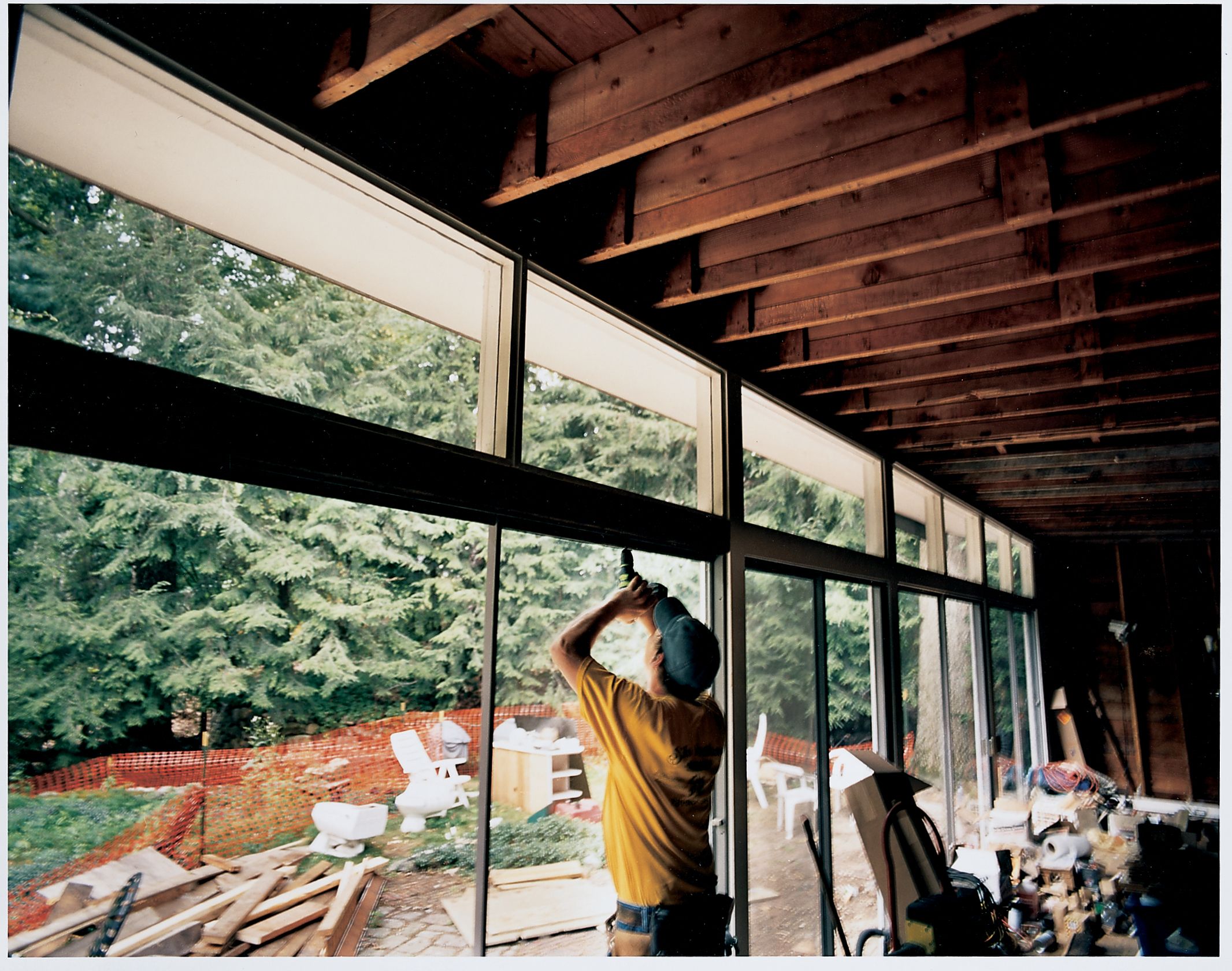
Deciphering the Sticker
Manufacturers typically submit their windows to tests that follow standards set by the nonprofit National Fenestration Rating Council (NFRC). Their findings, reported on a sticker affixed to most new windows, rate several factors, each expressed as a number. The sample below shows what all the figures actually mean:
(A) U-FACTOR measures how much heat escapes from a room through the window; the lower the number (usually between 0.20 and 1.20), the better the window’s insulating ability. In colder climates, look for 0.35 or lower. Warmer climates can go as high as 0.75.
(B) SOLAR HEAT GAIN COEFFICIENT (SHGC) indicates how much heat from the sun the window allows to come into a room, expressed on a scale of 0 to 1. In warmer climates, look for an SHGC lower than 0.4, which means that less than 40 percent of the sun’s heat enters a room.
(C) VISIBLE LIGHT TRANSMITTANCE (VT) measures how much light passes through the window. Anything higher than 0.6 (meaning 60 percent of the light is transmitted) will appear clear to the naked eye. Numbers below 0.5 can significantly darken the view.
(D) AIR LEAKAGE (optional) essentially says how drafty a window is, measured in cubic feet of air per square foot of window. A good number is between 0.1 and 0.3, and few manufacturers report this rating unless the window falls into that range.
(E) CONDENSATION RESISTANCE (optional) shows, through a number between 1 and 100, how well a window resists forming condensation (on the inside during cold months, on the outside during a humid summer). The higher the number, the better the window is at resisting condensation.
DESIGN PRESSURE (Not shown) (optional) is a structural rating that shows how well a window can withstand pressure from wind and rain in pounds per square foot. A large window should rate at least DP-30; 40 or 50 is even better. In hurricane regions they must also have impact glass, which, like a windshield, doesn’t shatter. Check codes for local requirements.
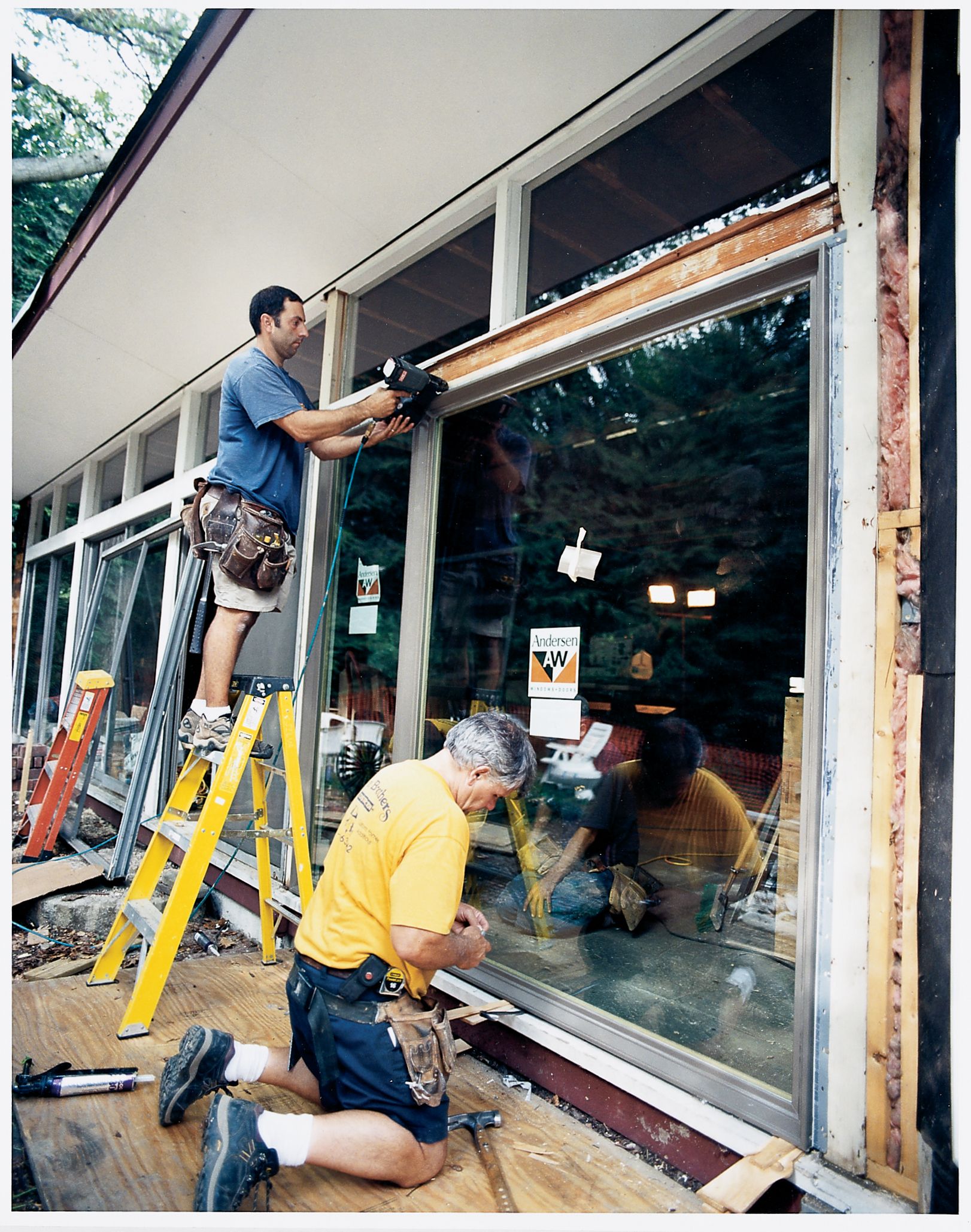
Glass Facts
The glass in a window is the first line of defense against uncomfortable extremes of hot and cold, as well as glare from the sun. “Comfort,” where windows are concerned, is not a scientific measurement, but the National Fenestration Rating Council (NFRC)—a nonprofit organization that rates the performance of windows, doors, and skylights—is working on ways to quantify it. “Comfort is the big issue now,” says NFRC executive director Jim Benney. “It’s not only about efficiency anymore.”
Window glass has come a long way in the past couple of decades. Very few windows today are sold with single panes, which are mostly used for historical accuracy and need good storm panels to work well. Most windows are dual-pane and sandwich an inert gas that doesn’t conduct heat well, like argon or krypton, between the two pieces of glass to create an insulated panel. More expensive triple-pane windows up the efficiency with a third layer of glass in the sandwich—good for very cold climates or places where noise is an issue.
Extra panes and insulating gases are only half the energy-saving armor. Most new window glass also has a low-E (for “low-emissivity”) coating on one or both of the sheets of glass. Low-E coatings are factory-applied on the inside of the panes (soft coat) or incorporated into the glass itself (hard coat). While soft coat performs better, hard coat lasts longer. Low-E can also be retrofitted by applying a film to the outside of the window or installing a storm panel with hard-coat glass.
Originally developed to slow down the escape of household heat during cold weather—increasing a window’s insulating ability, or U-factor—today’s coatings also cut down on the heat from the sun that enters the house, known as solar heat gain. (See “Deciphering the Sticker,” left, for how these features are rated.) As a bonus, the coatings also block most of the sun’s ultraviolet rays, which can fade wood and fabrics.
Cold climates, such as that at the TOH TV project house site, present a conundrum: How to cut solar heat gain in summer but still take advantage of it in winter, to offset heating bills? The short answer is, you can’t have it both ways. But TOH plumbing and heating expert Richard Trethewey says it’s more important to control solar heat gain in summer. “It’s not worth fighting for the extra heat in the winter, because it’s too spotty—it won’t warm up the whole house,” he says. “You’ll save more if you don’t have to crank the air-conditioning in the summer.” While low-E coatings add 10 to 15 percent to the cost of windows, they reduce energy loss by 30 to 50 percent, which means, depending on the type of heating fuel being used, they could pay for themselves in 5 to 10 years. In fact, Michael Koenig, manager of the technical group at Andersen Corporation, recommends a simple strategy: If you consistently use air-conditioning to beat the heat wherever you live, buy windows with both a U-factor and a solar heat gain rating around 0.35.
That advice falls roughly in line with the U.S. Department of Energy and Environmental Protection Agency’s guidelines for Energy Star?certified windows suitable in all 50 states. Energy Star windows generally perform in the top 10 percent of all windows, says Koenig, and those rated for the entire country will provide the best comfort in a wide range of weather conditions. The ones chosen for the Cambridge house—dual-paned, argon-filled, and low-E—fall into that category.
The newest generation of low-E is also what’s known in industry lingo as “spectrally selective,” meaning it keeps out heat without cutting down on light—an issue with early versions of low-E, which darkened the window glass. While windows aren’t labeled as having a spectrally selective coating, it’s safe to assume that any new window that doesn’t have a visible tint and has good ratings on U-factor and solar heat gain coefficient likely has it.

Frame Choices
Because NFRC ratings also factor in the structural material around the glass, a window’s frame is also important to its efficiency.
Wood
Traditional windows were framed entirely in wood, and solid wood windows are still sold today. Wood is a good insulator, but does require a lot of maintenance to keep up the paint or stain that seals out moisture and prevents rot.
Aluminum
Windows framed with aluminum are very strong, but because metal conducts heat, they aren’t good insulators. Manufacturers typically temper this drawback with plastic-strip insulation or by cladding a wood frame with aluminum on the outside.
Vinyl
Frames made of vinyl are the darlings of the window market—relatively inexpensive, low-maintenance, and good at insulating. They aren’t as strong as a high-quality wood or aluminum frame, so better versions, like some of those used at the Cambridge house, combine vinyl with wood (the wood shows on the interior, the vinyl on the exterior). One advantage to both aluminum and vinyl frames is the ability to have them painted or primed at the factory, saving homeowners the time and trouble (and higher cost) of doing it after installation.
Fiberglass
This relatively recent entry into the window-frame market is a composite material that is very strong, an excellent insulator, and not prone to rotting, warping, or shrinking like wood. It can also be molded into more profiles than vinyl to create interesting trim details. But fiberglass is more expensive than other options, and not all manufacturers offer it yet. George Mabry opted for the sturdy stuff for the picture windows in his living room and kitchen: the frames are wood on the inside with fiberglass trim on the outside, and dual-pane glass is sandwiched in between. Perfect for holding up what appears to be a wall of glass—with priceless views of the backyard.
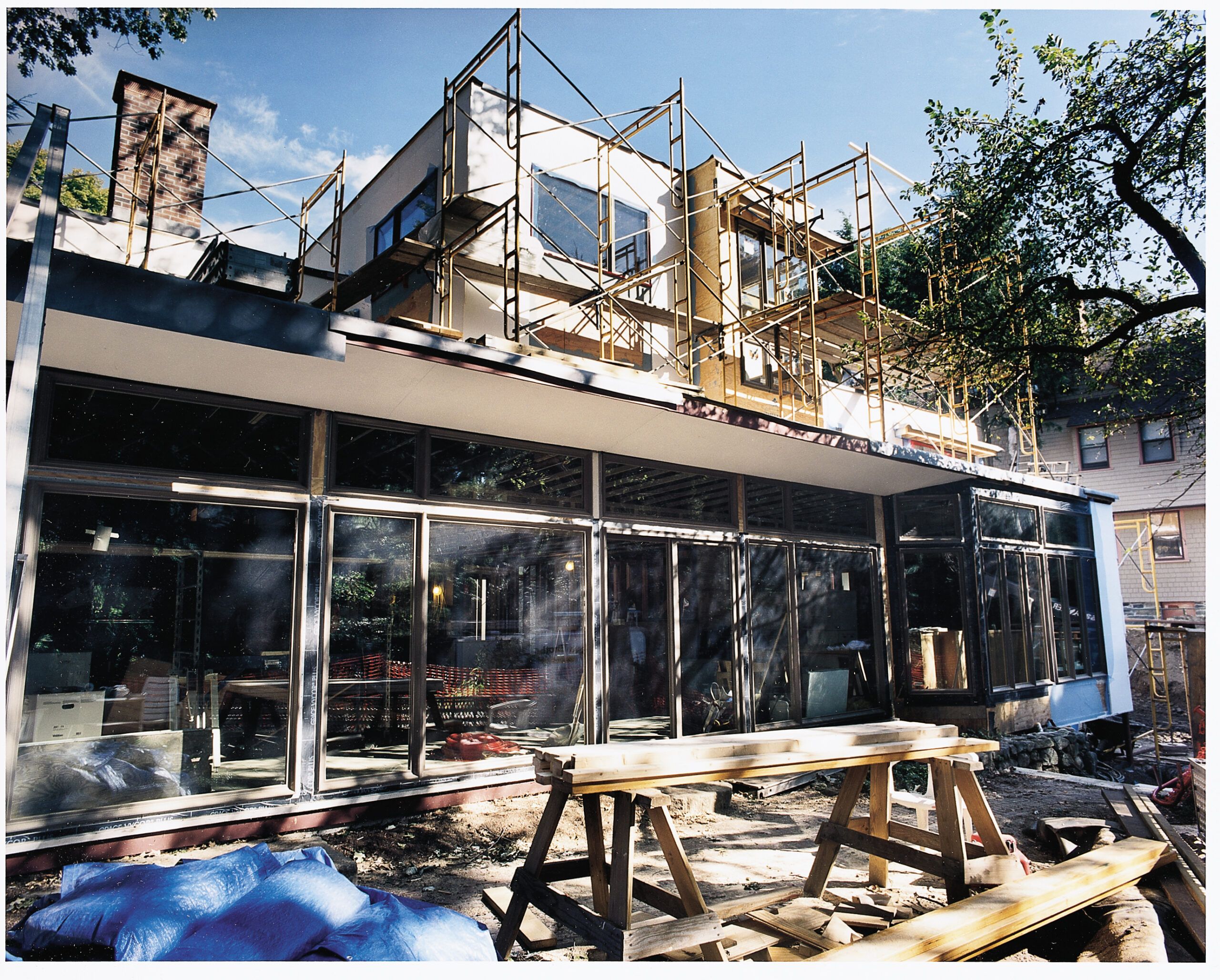
Design Considerations
It might seem simple: Bigger windows mean better views. In fact, poorly planned windows can provide views you don’t want (like the driveway or the cellar bulkhead) while missing the good stuff (like the crown of that flowering dogwood). They can also cause privacy issues for the house’s very visible inhabitants. By carefully mapping out window height, size, and placement, it’s possible to play down a bad view and accentuate the better vistas—from both sides of the glass.
Todd Tsiang, a design consultant who is helping George Mabry with the aesthetic choices for his house, says he always starts by thinking about how rooms will be used, then imagining the various viewpoints from inside. For example, if the other side of a backyard is dominated by a tall apartment building, one might want windows that are lower—say, at floor level—so the view is focused down on the landscaped back patio, not on the looming building across the way. (Building codes typically specify that any window that starts within 18 inches of the floor must be tempered safety glass.) Likewise, a window over the driveway or air-conditioning compressor might be better up higher, to take in the treetops as opposed to the car tires or the machinery.
Sometimes, however, privacy trumps view. The front of the TOH TV project house is quite close to a busy sidewalk, and some of the most private rooms of the home—like the master bath—face that way. To bring in light while preserving George’s modesty, architect Will Ruhl designed a series of (A) clerestory windows, which sit high on the room’s wall, above the sight line of the passing crowd.
In other rooms, privacy is gained through the use of (B) patterned glass—like the bumpy pattern chosen for the lights around the front door entry. The glass allows sunlight in without exposing the entry foyer to the eyes of outsiders. Seen at night from the outside, with the lights turned on inside, the solid door will appear to float dramatically in a wall of light. Where the industrial look of patterned glass isn’t appropriate, the best solution is good shades, such as the shoji screens and roll-up shades that Tsiang chose to obscure the view and soften the light in various rooms.
Airflow becomes an important issue on those perfect 72-degree days when air-conditioning is unnecessary. Not all of the windows in the Cambridge house open, but in each room there are some on at least two walls that do, creating a cross breeze. In the kitchen and living room, as well as in some of the upper-story bedrooms, those windows are (C) casements. In other parts of the second floor, shorter (D) awning windows allow George to open them any time, even on a rainy night, for a breath of fresh air.
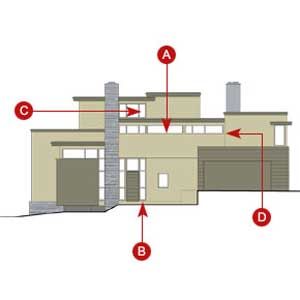
Where to Find It:
Architect:
Will Ruhl, AIA
Boston, MA
617-268-5479
Design consultant:
Todd Tsiang
Newtonville, MA
617-527-8620
Windows and doors:
Andersen Corp.
Bayport, MN
888-888-7020
For more information:
National Fenestration Rating Council (NFRC)
Silver Spring, MD
301-589-1776
Energy Star Programs
U.S. Environmental Protection Agency
Washington, DC
888-782-7937
